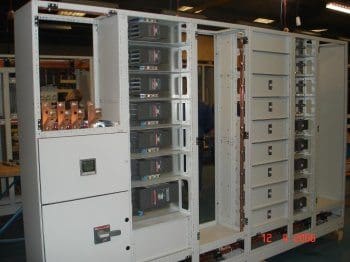Introduction to Forms of Separation
For specifiers, one of the most significant choices they face when specifying a low-voltage assembly, is the form of separation.

Selection of an inappropriate form of separation will at the very least cause disappointment. As a consequence the assembly may either be much more expensive than necessary or it may be unsuitable for the application.
Useful Definitions
The Standard includes definitions relating to Assemblies.Those particularly relevant to the forms of separation of Assemblies include the following.
Assembly
“Low-voltage switchgear and controlgear ASSEMBLY used to distribute and control energy for all types of loads, intended for industrial, commercial and similar applications where operation by ordinary persons is not intended.”
This includes floor standing or wall mounting distribution switchboards, panel boards, and motor control centres using electromechanical and/or electronic components.

It does however specifically exclude individual devices and self-contained components which control a single circuit i.e. wall mounted starters and fuse switches.
Functional Unit
“Part of an ASSEMBLY comprising all the electrical and mechanical elements including switching devices that contribute to the fulfilment of the same function”.
Comprises all parts necessary to form a complete incoming or outgoing circuit. It includes the load current carrying device(s) and associated equipment, cable terminals, and control devices within the assembly, that are necessary to form the complete circuit. It excludes the connections from the unit to the busbars (busbar connections) and any insulation or shrouding with which they may be provided.
It may consist of more than one compartment or enclosed protected space.
Section
“Constructional unit of an ASSEMBLY between two successive vertical delineations”.
Usually considered to be a single full height column containing one or more functional units. One or more columns are required to complete an assembly.
Assembly Sub-Section
“Constructional unit of an ASSEMBLY between two successive horizontal or vertical delineations within a section”. The area or space within a column identified and bounded by two adjacent and horizontal constructional members e.g. cross members or shelves.
Compartment
“Section or sub-section enclosed except for openings necessary for interconnection, control or ventilation”
| Title: | Guide to Forms of Separation – Low Voltage Switchgear and Controlgear Assemblies to BS EN 61439-2 by EAMA |
| Format: | |
| Size: | 3.7 MB |
| Pages: | 30 |
| Download: | Right here | Video Courses | Membership | Download Updates |



Very helpful
Excellent
thanks for good our book